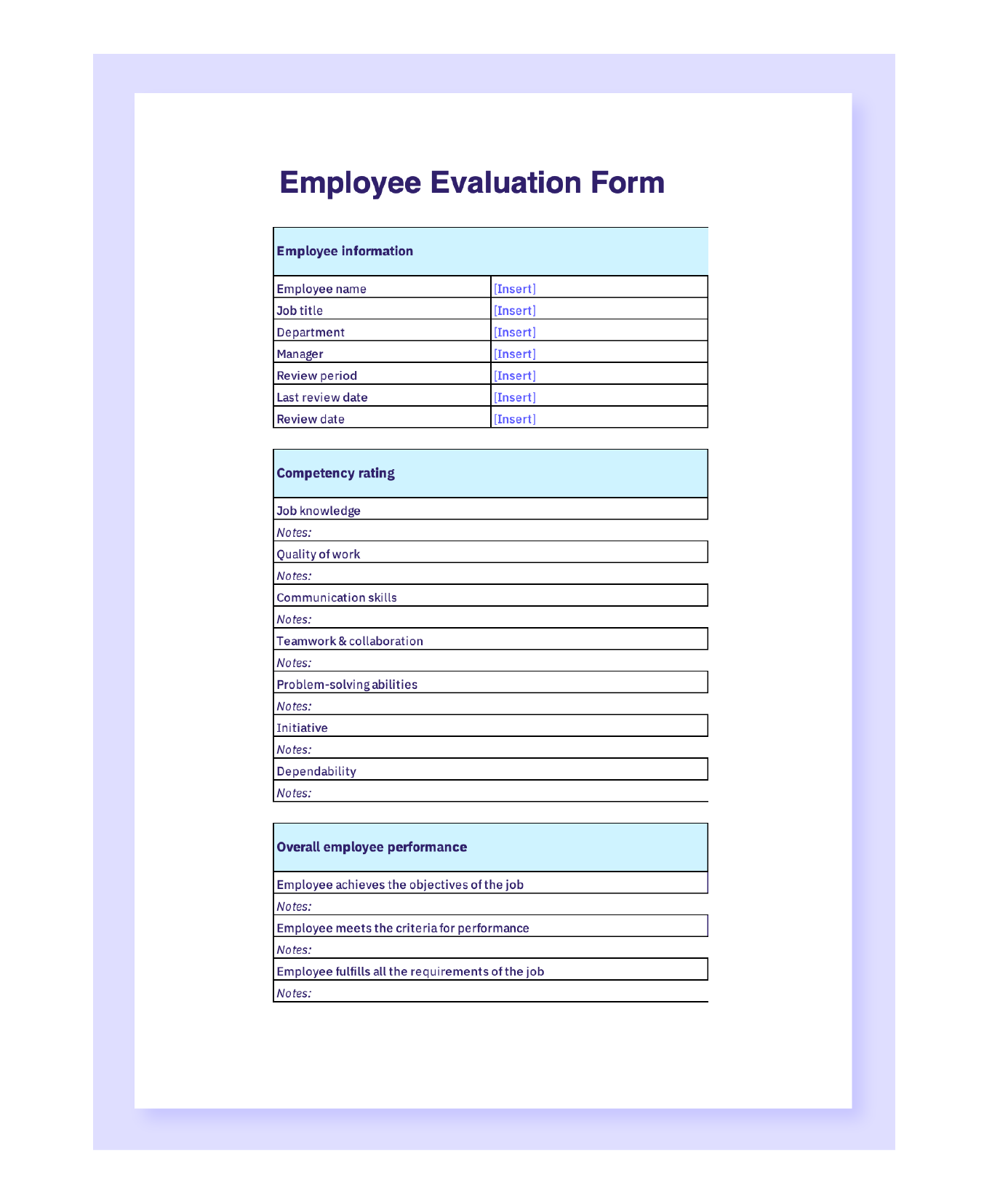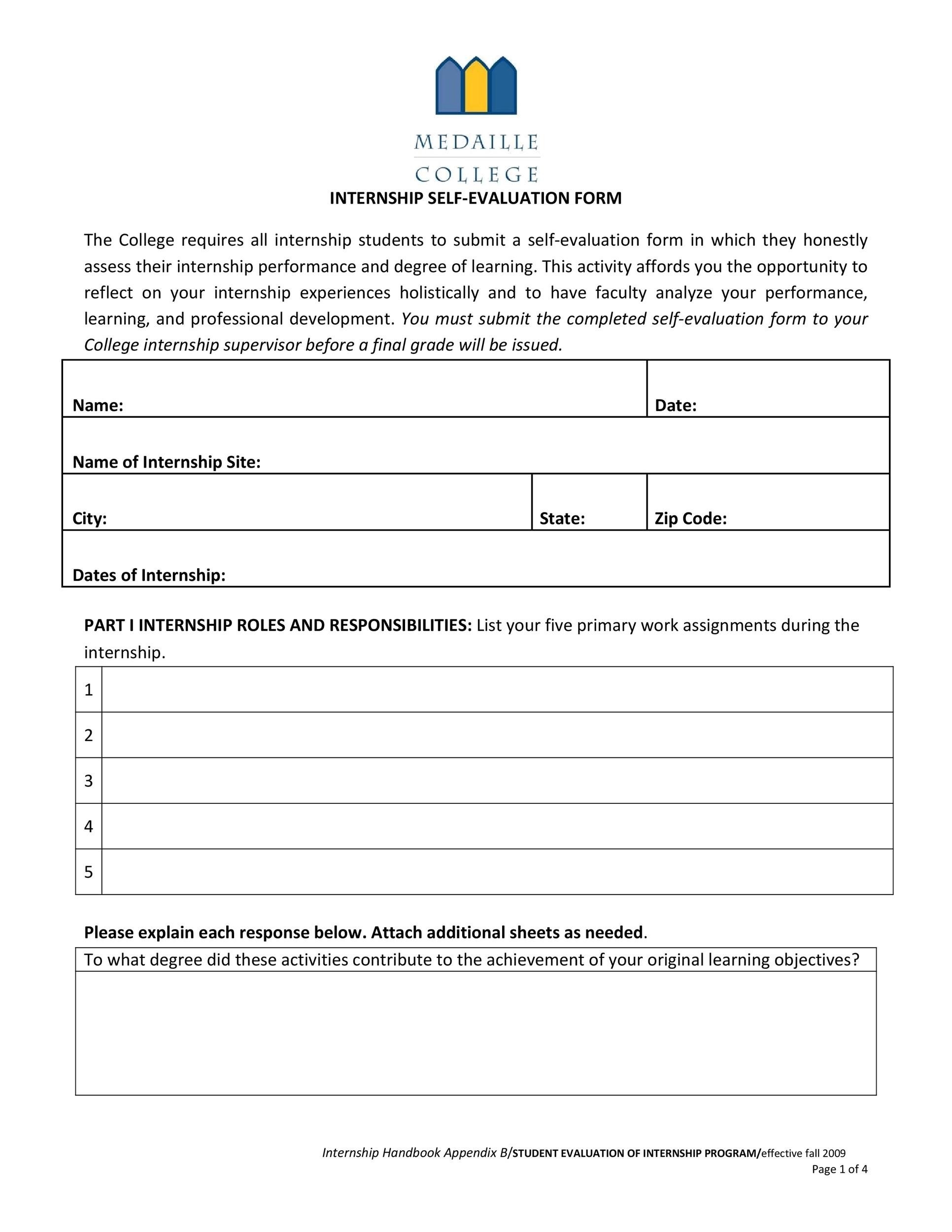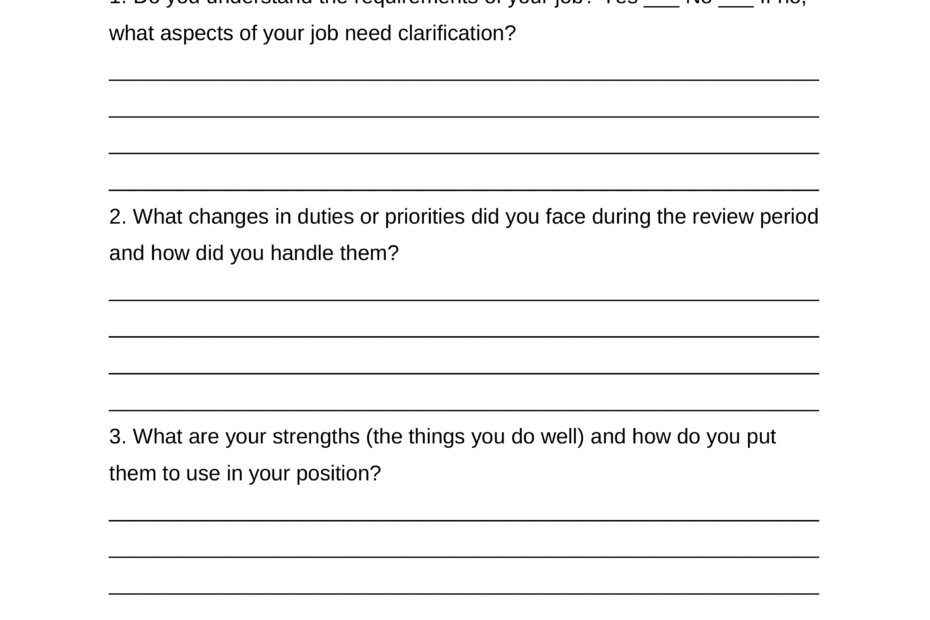Employee self-evaluation is an important process in any organization as it allows employees to reflect on their performances, strengths, and areas for improvement. By providing employees with a self-evaluation form, they can assess their own work and provide valuable feedback to their managers. This not only helps in setting goals for improvement but also in fostering better communication between employees and their supervisors.
Having a printable employee self-evaluation form can streamline the evaluation process and make it more efficient for both employees and managers. It provides a structured format for employees to evaluate their own performance and allows them to focus on specific criteria that are important to their roles within the organization.
 Printable Employee Self Evaluation Form
Printable Employee Self Evaluation Form
Save and Print Printable Employee Self Evaluation Form
 50 Self Evaluation Examples Forms U0026 Questions TemplateLab
50 Self Evaluation Examples Forms U0026 Questions TemplateLab
Here are some key components that are commonly included in a printable employee self-evaluation form:
1. Goals and Objectives: Employees can assess their progress towards achieving their goals and objectives set at the beginning of the evaluation period.
2. Strengths and Accomplishments: Employees can highlight their strengths and achievements during the evaluation period, showcasing their contributions to the organization.
3. Areas for Improvement: Employees can identify areas where they need to improve and develop a plan for addressing those weaknesses with the help of their managers.
4. Training and Development Needs: Employees can outline any training or development opportunities they feel would benefit their professional growth and enhance their performance.
5. Overall Performance Rating: Employees can rate their overall performance based on the criteria provided in the evaluation form, giving managers a comprehensive view of their self-assessment.
In conclusion, a printable employee self-evaluation form is a valuable tool that can help employees take ownership of their performance and career development. It encourages self-reflection, goal-setting, and open communication between employees and managers, leading to a more productive and engaged workforce.
